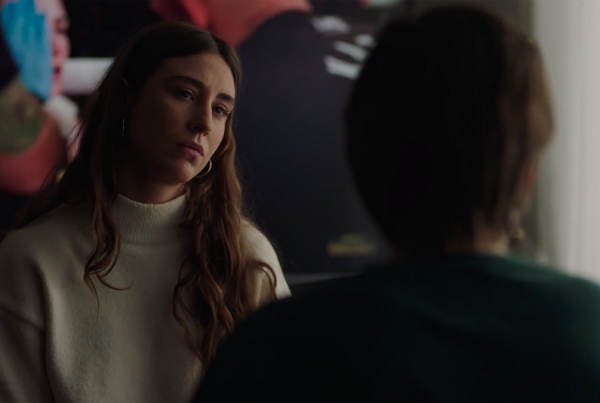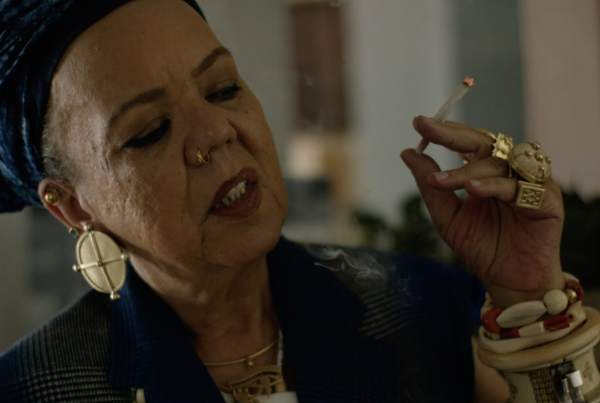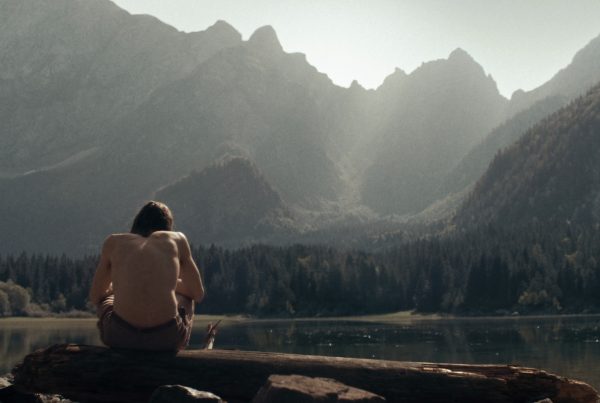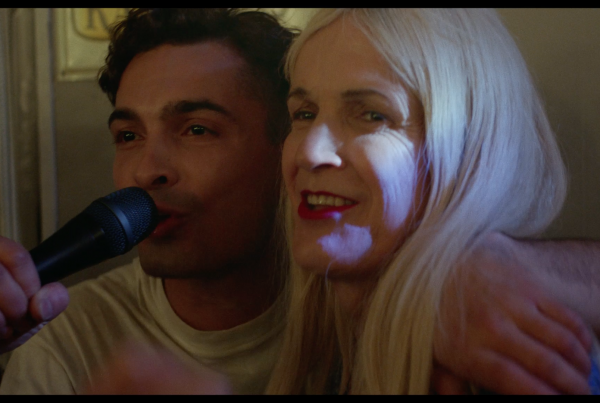After dancing long hours yesterday night, what is up today at Concorto?
At 5 pm at Palazzo Ghizzoni Nasalli, a meeting with Non Una di Meno Piacenza, Margherita Fontana and Vanessa Mangiavacca, curators of the Focus Elle, whose second part will be screened at 6 pm.
At 9 pm at Parco Raggio, Bare Trees in the Mist takes us to immense Nepal, followed by Fin De Saison, suspended between thriller and musical. Nagot Att Minnas, stop motion animation by Niki Lindroth von Bahr, who worked as costume designer for artists such as David Bowie and Fever Ray, will end the first part of the evening.
Alive shows us a new and original perspective on disability, while T will make us experience a T Ball, a ceremony that Miami hosts every year to celebrate one’s departed ones. The last shorts screened will be Potop, which re-interprets in an original way the generation gap, and Sole Mio, that portrays a family story in bourgeois France.
Do not miss Music Riot’s shorts in the greenhouse and the talk in the Boschetto with Seeyousound festival, partner of the Focus Music Riot.
Bare Trees in the Mist – Rajan Kathet
Seen by Vanessa Mangiavacca
There’s a corner of earth where silence reigns, where the land is so vast and unblemished to transform every sound in a musical note, in a synergic symphony between primitive human actions and the eternal survival of nature. Wrapped up in the mist, on Nepal’s high grounds, we can glimpse at poor towns and communities where life revolves around rituals in agriculture, in craftmanship, in the preparation of food, in a rhythm that is diametrically opposite to that of a city. Kaali is a young mother, who waits for her husband to come back from a trip with some money for the family: through her encounter with the neighbours we perceive, together with the protagonist, that draining and troubled wait in the silence search for economic, but also emotional, certainties. The surrounding environment moves in symbiosis with these feelings, capable to absorb and return with its own language the anxieties that lie beneath it; even the images seem to develop in conjunction with nature, up to the moment the lump in the throat finally winds down. Rajan Kather represents poverty and wait with extreme delicacy through this journey, that is both physical and not, that has as its end point a sad realization. There comes a time in which we all feel like bare, dismayed trees: we learn from nature to get back on our feet once spring comes back again.
Fin de Saison – Matthieu Vigneau
Seen by Irene Pagano
Halfway between thriller and musical, “Fin de Saison” by Matthieu Vigneau has a pretty good chance of slipping inside your recurring nightmares. Thanks to the actors’ vacant expressions, to awkward dancing and an enormous amount of see-through aqua socks, Vigneau sets up a carousel of grotesque in which the only characters that don’t talk through singing express themselves through poetical ramblings and ideograms painted with sauce. If the sharp composition, the bucolic scenery and the dry deliveries are reminiscent of Lanthimos’ “Dogtooth” in an unlikely marriage with early Wes Anderson-ian colours and mannerism, the feeling of dread it conveys holds a very peculiar quality, not derivative at all. It looks like the characters, rather than bursting into songs when overtaken by strong emotions, are instead cursed by the musical anathema, forced to unevitably squeeze their most human, depressing and frustrating feelings inside of a catchy tune. Nonetheless, like many stories about weirdness and horror, “ Fin de Saison” is also about love. A sort of love which could perhaps be labelled as gothic, as the font used in the title suggests.
Nagot Att Minnas – Niki Lindroth Von Bar
Seen by Yorgos Kostianis
While the name Niki Lindroth von Bahr, might be a tad difficult to remember,
the evocative aesthetic of her films is somewhat impossible to forget.
Based in Stockholm, Sweden, Niki has been working as a prop maker and costume designer for revered artists like David Bowie and Fever Ray. However, stop-motion animation is where her eccentric talent really shines.
In 2017, her third short film The Burden, swept the board in most animated film festivals –including the highest accolade at Annecy International Animated Film Festival; thus making Lindroth a hallmark name in the animation world.
Her films feel like little purgatories. Caricatures of a world so astoundingly lifelike in its detail, yet uncannily surreal in its outlandishness.
Her latest film, “Something to Remember”, plays out like a swan song lullaby for the end of the world after an accident at the CERN laboratory.
Alive – Jimmy Olsson
Seen by Irene Pagano
Victoria isn’t a miserable creature, desperate for love and contact. She is a person with desires and, among the others, the wish of feeling desired. As soon as she starts perceiving herself in this light, the path seems to become clearer.
“Alive” by Swedish director Jimmy Olsson presents a fresh approach to a theme never really tackled enough: disabled characters’ stories can be captivating even if they’re not portayed as superheroes. A sensitive topic like sexual intimacy might sometimes be handled akwardly, especially when minorities are involved, because we have lacked adequate representation and openness for so long that we haven’t yet fully developed a language to narrate it. But here, awkwardness just adds another shade to the realism of it, to the harshness and the kindness implicated in the process. The characters are almost as oblivious as us and are still in that process of learning themselves, and seeing them getting their heads around it really is both heartwarming and thought-provoking. In addition, the lead actresses give wonderful performances not just in portaying carer-client interactions but respectful, friendly, genuinely interested ones, without sweetening all the embarassment and the misteps that dealing with a professional relationship bordering this much onto closeness can often cause.
Last but not least, Olsson proves to have a remarkably delicate eye for bodies and their discourse. We see Victoria being manipulated, cleaned, carried around, made to sit up or lay down. But we never see her moments alone or with Håkan. Like Ida, we give her space. We let her feel alive.
T – Keisha Rae Witherspoon
Seen by Vanessa Mangiavacca
Every year Miami hosts the T Ball, an Afro-American ceremony to celebrate the departed loved ones with a unique and colorful liturgy during which the participants create innovative costumes to remember those who have been lost. Merging three stories, Keisha Rae Witherspoon presents an anarchic portrait of this moment, creating an extraordinary experimental documentary: many are the sensorial connections stirred up by T, winner of the Golden Bear for Best Short Film 2020 and Italian premiere at Concorto. American and African cultures clash, they seldom meet (the recent Black Lives Matter protests prove it once again): the supremacy of the former has resulted over time in overshadowing the latter, causing some cultural and ancestral aspects to be forgotten. The short, whose form and topic recall Divine Horseman by Maya Deren, another memorable experimental documentary, interprets the death rite as a moment not as much of celebration, but as an opportunity to free and share one’s creativity: this latter is meant as the ultimate form of expression, as a way to relieve the pain and give life back to those who have been lost. CREATE OR DIE, we hear over and over again. T is a cultural testimony, an eccentric visual poem, a surreal and cosmic prayer, an extra-terrestrial funeral dance, a hymn to self-expression in all its forms.
Potop – Kristijan Krajncan
Seen by Sofia Brugali
Potop (The deluge) is an original interpretation of the generational conflict, a short film characterized by a mix of realistic setting and mythological atmosphere.
In an old family hut, a son is torn between his desire to reconcile with his origins and traditions, embodied in his father, and his need to leave them behind. This internal contradiction is represented by the director Kristijan Krajnčan through recurring symbols: the omnipresent water, an image of change, whose pounding serves as a background for the filial dilemma; and the toad, generally linked to transitional periods and metamorphosys.















Commenti recenti